Understanding Prescription Painkiller Addiction
Learn about prescription painkiller addiction & abuse
Developed in order to alleviate the discomfort of chronic pain conditions, or to help regulate the pain that is frequently associated with certain medical procedures, injuries, medical conditions, severe illnesses, or other types of diseases, prescription pain medications are a beneficial source of relief for those who are suffering from these types of concerns. With their potent effects on the central nervous system and their ability to purposefully block pain receptors, however, these painkillers also elicit feelings of pleasure and euphoria, especially when abused.
Belonging to the classification of drugs known as opioids, prescription painkillers are a type of opiate narcotic that are extremely addictive, due to the ways that they interact with the central nervous system. That addictive property, coupled with the pleasurable sensations and feelings of detachment from reality that can be induced by the ingestion of this substance, is what makes prescription painkillers one of the most frequently abused substances in society today.
Once an addiction to prescription painkillers has developed, it can be extremely difficult to overcome without the help of qualified professionals. Fortunately, there are many viable options for care that can assist individuals in overcoming their addictions and returning to a life of sobriety.
Statistics
Prescription painkiller abuse statistics
The abuse of prescription medications of all kinds is an ongoing problem in the United States and throughout the world as a whole. While there are many kinds of prescription medications that are abused, according to the National Institute on Drug Abuse, prescription painkillers are abused in much greater numbers than are other types of prescription medications, including stimulants and tranquilizers. More specifically, in 2010 alone, of the millions of people who reportedly abused these three categories of prescription drugs, 1.1 million people were said to have used stimulants, 2.2 million used tranquilizers, and an astounding 5.1 million used painkillers. Estimates have also been provided that suggest that the number of prescription painkiller-related deaths has nearly tripled over the last twenty years, exceeding the number of deaths related to cocaine and heroin. Furthermore, individuals who abuse prescription painkillers are also at a heightened risk for going onto abuse, and subsequently become addicted to, heroin.
Causes & Risks
Causes and risk factors for prescription painkiller abuse
Experts and researchers in the fields of mental health and addiction agree that there are likely a number of factors working together that cause some individuals to be more susceptible to developing an addiction to substances like prescription painkillers than others are. Consider the following explanations:
Genetic: Long known to run in families, addiction is said to have a genetic link to its onset. When individuals has first-degree biological family member who struggle with drug abuse, addiction, and dependence, they are at a higher risk for suffering from similar chemical dependency concerns at some point in their lives as well.
Environmental: Environmental factors often play a large role in enhancing an individual’s vulnerability to developing an addiction to substances, such as prescription pain medication. The most notable of such factors would be when individuals find themselves in a situation where their physical health has deteriorated in such a way that it has left them in need of prescription pain medications in order to find alleviation from their distress (e.g. suffering from chronic pain or having to undergo surgery). The exposure that these people subsequently have to prescription painkillers makes them much more susceptible to developing an addiction to this detrimental substance. Additionally, individuals who are exposed to the abuse of various substances, whether they be prescription painkillers or something else, tend to view the behavior as being something that is acceptable and are therefore more likely to engage in that type of behavior themselves.
Risk Factors:
- Family history of chemical dependency concerns
- Personal history of abusing other substances
- Personal and/or family history of mental health conditions
- Suffering from chronic pain or another type of medical condition of which pain is symptomatic
- Exposure to drug and/or alcohol abuse
- Ease of access that a person has in order to obtain painkillers
- Being the victim of abuse and/or neglect
- Peer pressure
Signs & Symptoms
Signs and symptoms of prescription painkiller abuse
The signs and symptoms that are displayed by individuals who abuse prescription painkillers will vary depending upon a number of different factors. Below are examples of various behavioral, physical, cognitive, and emotional symptoms that may manifest in an individuals who abusing prescription pain medication:
Behavioral symptoms:
- Alterations in one’s level of energy
- No longer engaging in activities that were once enjoyed
- Inability to adhere to responsibilities at work and home
- Increased effort placed on seeking out drugs
- Going to various doctors in order to obtain multiple prescriptions
- Faking pain or fabricating illness in order to obtain medication
- Lying
- Stealing
Physical symptoms:
- Lightheadedness
- Drowsiness / fatigue
- Chronic headaches
- Ringing in the ears
- Constricted pupils
- Decreased heart rate
- Pervasive itching
- Flushed skin
- Difficulty breathing
Cognitive symptoms:
- Memory disturbances
- Lacking the ability to use appropriate decision-making skills
- Extreme confusion
- Disorientation
- Concentration difficulties
- Hallucinations
- Delusions
- Dissociation
Psychosocial symptoms:
- Inability to effectively regulate emotions
- Drastically oscillating moods
- Heightened levels of depression
- Heightened levels of anxiety
- Excessive feelings of agitation
- Excessive feelings of irritability
- Irrational feelings of fear / paranoia
- Suicidal ideation
Effects
Effects of prescription painkiller abuse
The abuse of prescription pain medication can negatively impact all areas of an individual’s life. Depending on the specific type of painkiller that has been abused, the length of the abuse, and the frequency of the abuse itself, the type and severity of such effects will inevitably vary. Examples of possible detriments that can arise from the prolonged abuse of prescription painkillers can include:
- Interaction with law enforcement as the result of forging prescriptions
- Decline in the quality and quantity of interpersonal relationships
- Social withdrawal / isolation
- Failure to perform at the expected level occupationally
- Job loss / ongoing unemployment
- Financial strife
- Increased risk for developing health problems
- Liver damage / liver failure
- Seizures
- Onset of symptoms of depression, anxiety disorders, and/or other mental health conditions
- Respiratory depression
- Irreversible cognitive impairment
- Overall decline in physical and mental health
Co-Occurring Disorders
Prescription painkiller abuse & co-occurring disorders
Unfortunately, it is not uncommon for individuals who struggle with chemical dependency concerns, including an addiction to prescription painkillers, to also meet clinical criteria for additional mental health conditions. Some of the most commonly cited of such conditions that are known to occur alongside the abuse of prescription pain medication include:
- Anxiety disorders
- Depressive disorders
- Bipolar disorder
- Posttraumatic stress disorder (PTSD)
- Attention-deficit/hyperactivity disorder (ADHD)
- Personality disorders
- Other substance use disorders






